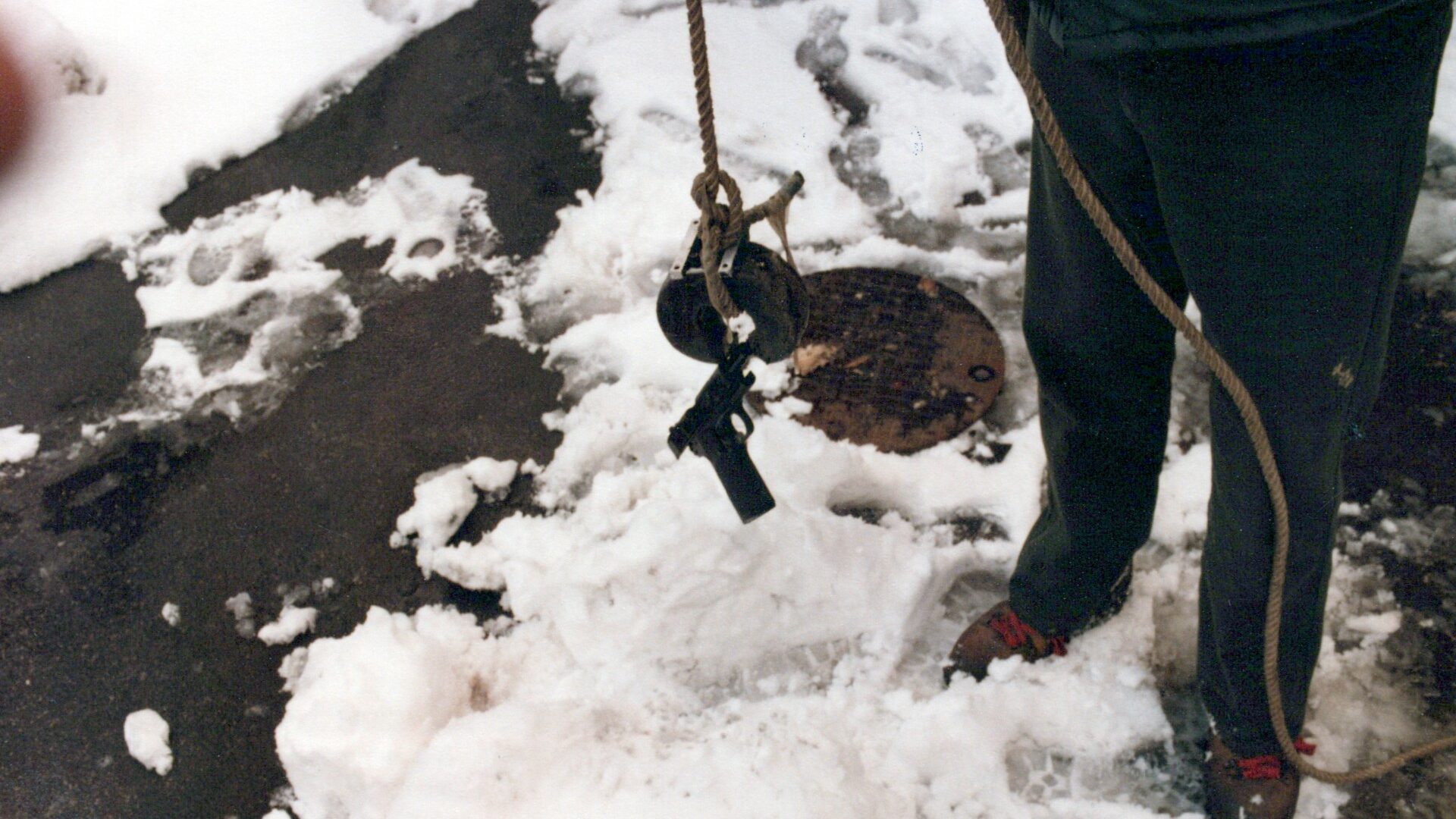Under pressure, Border Patrol now counts getaways
Apr 22, 2013, 4:32 AM
CAMPO, Calif. (AP) – Richard Gordon is one of the Border Patrol’s best at spotting the smallest human traces in pursuit of people who enter the U.S. illegally from Mexico: dusty footprints, torn cobwebs, broken twigs, overturned pebbles.
It’s a skill he has sharpened over the last 16 years in the craggy, shrub-covered mountains east of San Diego and one that is taking on new importance as gauging border security has emerged as a potential stumbling block to an overhaul of the U.S. immigration system.
With lawmakers demanding more measures of border security and assurances that massive spending increases on enforcement yield results, Gordon’s skill, known as “sign-cutting,” will likely get greater focus because it is the Border Patrol’s dominant technique to count those who escape capture.
It’s not the new cameras, sensors and airborne radars.
“You can have all the technology but we’re still back to sign-cutting,” said Gordon, 46, who works in the same sparsely populated area where he grew up hunting deer and quail. “It’s tried, and it’s true, and it works.”
There’s no question it works to find hikers, but its effectiveness at tracking how many escape agents’ grasp is more open to debate.
A recent Government Accountability Office report cites Border Patrol data from fiscal 2011, the latest available, that 61 percent of estimated illegal crossings on the southern border resulted in capture, 23 percent turn back to Mexico and 16 percent got away.
Of the 85,467 who got away, 70,980 (83 percent) were counted by sign-cutting, with nearly all the rest from cameras and plain sightings.
Despite such precise tallies, Border Patrol Chief Mike Fisher said sign-cutting “is not an exact science.” Even the most skilled trackers make educated guesses and, as the GAO noted, counting has been inconsistent.
“We get better every day,” but the agency doesn’t know with pinpoint accuracy the number of border crossers and what happened to them, said Fisher, who issued a directive in September to ensure that the more than 21,000 agents under his command are consistent in how they count.
The implications for immigration reform are potentially significant as lawmakers seek assurances that the border is secure before millions are allowed to legally remain in the country.
The Border Patrol has been judged almost solely by its number of arrests, which are hovering near 40-year lows. Apprehension figures are unquestionably accurate but have limited value in assessing border security.
A Senate bill introduced last week sets a goal that 90 percent of illegal crossings from Mexico in high-traffic areas result in arrest or a turn-back. One key possible point of contention is how much weight to give to turnarounds, which are mainly tallied by plain sightings.
The Border Patrol takes credit for them, but others note they may succeed on a second try after waiting a few hours or trying another location.
“The fact that they weren’t apprehended isn’t necessarily a bad thing,” Fisher said in an interview. “The fact that they didn’t continue their entry is, overarching from our strategy, what we’re trying to prevent.”
Edward Alden, a senior fellow at the Council on Foreign Relations, told a congressional panel last month that lawmakers should avoid putting too much emphasis on the numbers because it is unknown how many people the Border Patrol misses altogether, failing to find any traces. He also warned about a potential for agents to game numbers to hit targets.
But Doris Meissner, the top immigration official under former President Bill Clinton, said Congress and the GAO will scrutinize the numbers closely to make sure they are credible, as airborne radar gets more sophisticated.
“They’re going to want to know these are not funny numbers,” she said.
The Border Patrol has been experimenting with airborne radar to count getaways. A trial run in a 150-square-mile stretch of Arizona found about 1,870 were caught and about 1,960 got away from Oct. 1 through Jan. 17, according to a senior Customs and Border Protection official who spoke on condition of anonymity because results have not been made public.
U.S. authorities play down the significance of the radar results, first reported by the Los Angeles Times, saying the technology is promising but flawed.
For now, sign-cutting is the main tool.
Gordon seems to find clues everywhere: a pebble with moist dirt facing the sun to suggest it was recently overturned; backpack fibers stuck on a barbed wire fence; fallen leaves. In off-hours, he looks for clues about how many people stepped on his driveway or came before him on a walking trail.
He examines each sign to determine its age. He knows a cloverleaf curls immediately after it falls. He can tell how quickly a trampled blade of grass returns to its natural height and how fast a broken tree limb turns brittle.
Around the clock, agents lay fresh tire tracks on dirt roads that hug the border, recording the times to help determine the age of each new set of footprints.
Smugglers have become adept at covering their tracks, ordering migrants to tie blankets over the soles of their shoes to avoid leaving sharp footprints. The last person in the group may carry a jug of dirt to sprinkle over any traces. Some migrants walk backward to leave an impression that they turned back to Mexico. At night, migrants walk on paved roads to avoid leaving prints, a trick called “blacktopping.”
The best hours to track are early morning, when sunlight casts a long shadow, and under a flashlight’s evening glare.
Gordon began patrolling a highway checkpoint in Southern California in 1990 and, seven years later, transferred to Campo, where his father also gained a reputation as an expert Border Patrol tracker. Unlike urban stretches of the 1,954-mile border with Mexico that are crowded with houses, agents must learn quickly to read tracks in the parched, desolate valleys of oak and shrub.
Gordon, who is still fit enough to hustle through thick brush with his chest pressed to the ground, is second-in-command in a station that employs about 400 agents to scour 400 square miles. He captured a group of 76 when illegal crossings near the station peaked about 10 years ago. Until about five years ago, the station often made 100 arrests a day.
Illegal crossings slowed to a trickle since the Border Patrol responded to the 2009 assassination of a Campo-based agent by flooding the area with agents and cameras. It isn’t unusual for the station to go shifts without making any arrests, a luxury the station chief says has allowed agents to pursue groups of only two or three people over days and sharpen their tracking skills.
When someone is captured, agents scour the area in widening circles until they feel confident that they caught everyone in the group or know how many got away. One obvious sign of a getaway is when a set of footprints ends in a well-known staging area for smugglers to pick up migrants in cars.
When migrants are caught, a supervisor typically makes the call on when to count a getaway. “There is nothing scientific about this,” Gordon says. “Some people are better at it than others.”
___
Associated Press writer Alicia Caldwell in Washington contributed to this report.
(Copyright 2013 The Associated Press. All rights reserved. This material may not be published, broadcast, rewritten or redistributed.)






